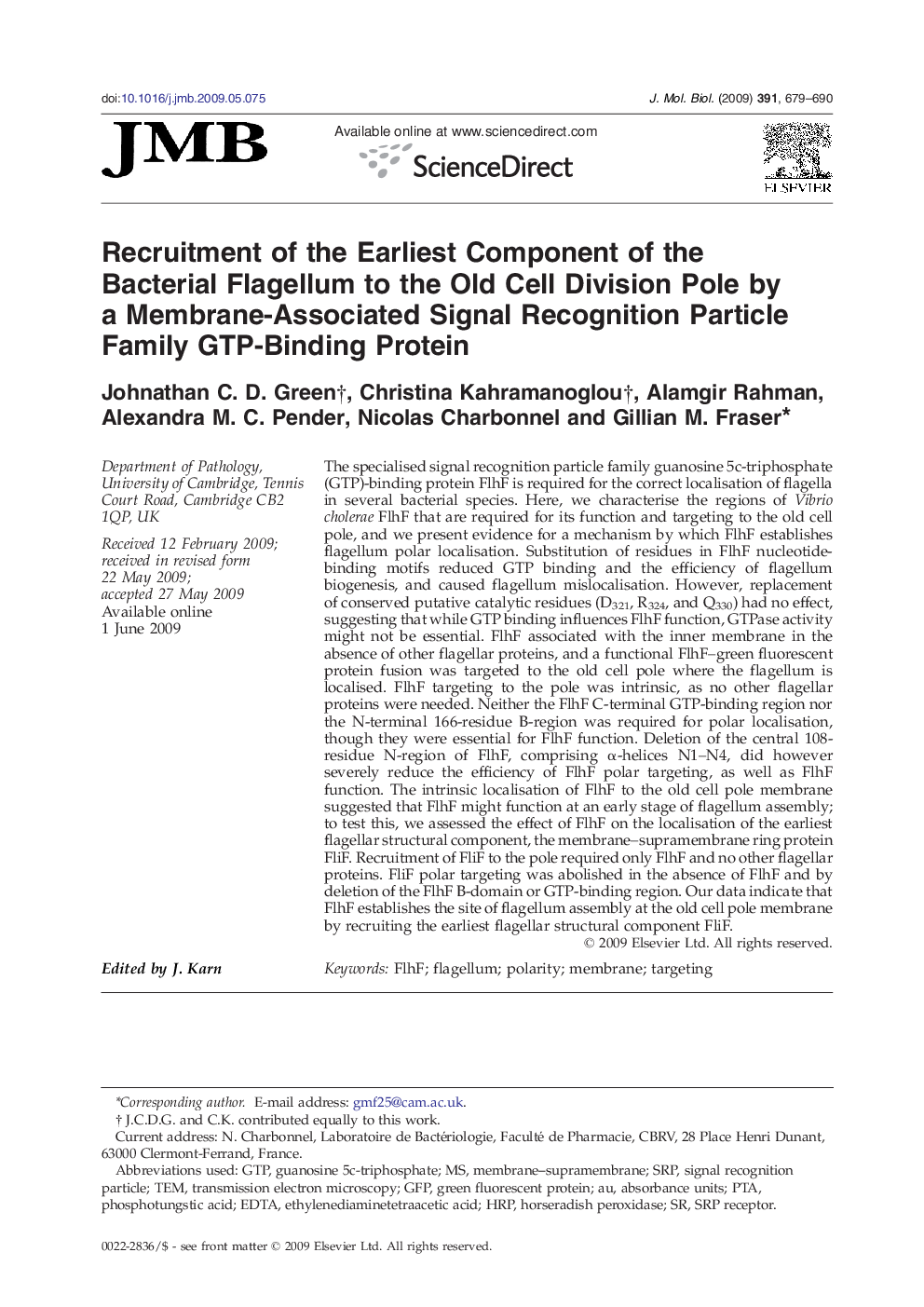| کد مقاله | کد نشریه | سال انتشار | مقاله انگلیسی | نسخه تمام متن |
|---|---|---|---|---|
| 2186391 | 1096055 | 2009 | 12 صفحه PDF | دانلود رایگان |

SummaryThe specialised signal recognition particle family guanosine 5c-triphosphate (GTP)-binding protein FlhF is required for the correct localisation of flagella in several bacterial species. Here, we characterise the regions of Vibrio cholerae FlhF that are required for its function and targeting to the old cell pole, and we present evidence for a mechanism by which FlhF establishes flagellum polar localisation. Substitution of residues in FlhF nucleotide-binding motifs reduced GTP binding and the efficiency of flagellum biogenesis, and caused flagellum mislocalisation. However, replacement of conserved putative catalytic residues (D321, R324, and Q330) had no effect, suggesting that while GTP binding influences FlhF function, GTPase activity might not be essential. FlhF associated with the inner membrane in the absence of other flagellar proteins, and a functional FlhF–green fluorescent protein fusion was targeted to the old cell pole where the flagellum is localised. FlhF targeting to the pole was intrinsic, as no other flagellar proteins were needed. Neither the FlhF C-terminal GTP-binding region nor the N-terminal 166-residue B-region was required for polar localisation, though they were essential for FlhF function. Deletion of the central 108-residue N-region of FlhF, comprising α-helices N1–N4, did however severely reduce the efficiency of FlhF polar targeting, as well as FlhF function. The intrinsic localisation of FlhF to the old cell pole membrane suggested that FlhF might function at an early stage of flagellum assembly; to test this, we assessed the effect of FlhF on the localisation of the earliest flagellar structural component, the membrane–supramembrane ring protein FliF. Recruitment of FliF to the pole required only FlhF and no other flagellar proteins. FliF polar targeting was abolished in the absence of FlhF and by deletion of the FlhF B-domain or GTP-binding region. Our data indicate that FlhF establishes the site of flagellum assembly at the old cell pole membrane by recruiting the earliest flagellar structural component FliF.
Journal: Journal of Molecular Biology - Volume 391, Issue 4, 28 August 2009, Pages 679–690